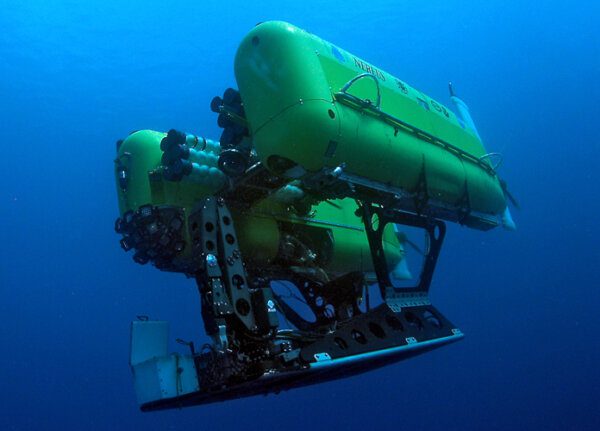Multiphysics simulation is a complex, powerful computational technique that lets you explore all the real-world physical interactions that a complex product may encounter during use including fluid dynamics, electromagnetism, acoustics, and optics. When you’re designing and testing a product with a low to no error margin, Multiphysics simulation is extremely accurate.

Take for example the design and testing of deep submersible vehicles (DSVs) – vehicles that can operate at great depths in the ocean. DSVs must withstand high hydrostatic pressure, which can cause deformation, buckling, or failure of the pressure hull, which is the primary element that provides buoyancy and protection for the crew and equipment. To ensure the safety and efficiency of these vehicles, Multiphysics simulation can be used to model and analyze the structural, thermal, and electrical behavior under different diving scenarios.
One of the applications of Multiphysics simulation for DSVs is to optimize the material and geometry of the pressure hull, which can be made of metal or composite materials and can have different shapes, such as spherical, elliptical, or cylindrical, depending on the weight/volume ratio and aspect ratio required for the desired diving depth. Multiphysics simulation can help to evaluate the stress, strain, displacement, and buckling factors of different pressure hull designs under various loading conditions, such as hydrostatic pressure, temperature gradient, and thermal expansion. Multiphysics simulation can also help to determine the first ply failure index and failure criteria for composite materials, which can have different properties and orientations of the upper and lower faces and the core layer.
Another application of Multiphysics simulation for DSVs is to study the performance and efficiency of thermoelectric generators (TEGs), which are devices that can convert heat into electricity using the Seebeck effect. TEGs can be installed in deep diving submersibles to harness the energy from hydrothermal vents, which are hot springs on the seafloor that emit hot water and minerals. Multiphysics simulation can help model and analyze the output voltage, current, power, and efficiency of TEGs under different temperature and pressure conditions. Multiphysics simulation can also help to optimize the design and placement of TEGs in relation to the heat source and heat sink.
One known challenge that comes with operating DSVs is ensuring reliable communication with other DSVs as well as with those on the surface. Conventional methods such as radio waves or acoustic signals may not work well in complex underwater environments with high pressure and noise. One way to avoid this challenge is to test the communication ability of DSVs using different modalities and protocols using Multiphysics simulation. You can create realistic scenarios of underwater communication and evaluate the performance of different DSVs in terms of signal strength, bandwidth, latency, and error rate. You can also explore the effects of various factors such as depth, distance, orientation, interference, and obstacles on communication quality. This way, you can optimize the design and operation of DSVs for effective communication in different underwater missions.
Multiphysics simulation is a useful tool for testing pressure and communication of deep submersible vehicles and can help improve structural integrity, thermal stability, and energy generation, which are essential for exploring and exploiting the deep ocean environment.
Tap into our team of expert engineers who have decades of Multiphysics simulation experience. Contact us today!
